Plant Care: Caring for Philodendrons
Care guide for Philodendron houseplants in 6- or 10-inch pots, including watering, light, humidity, fertilizing, repotting, propagation, and plant toxicity.
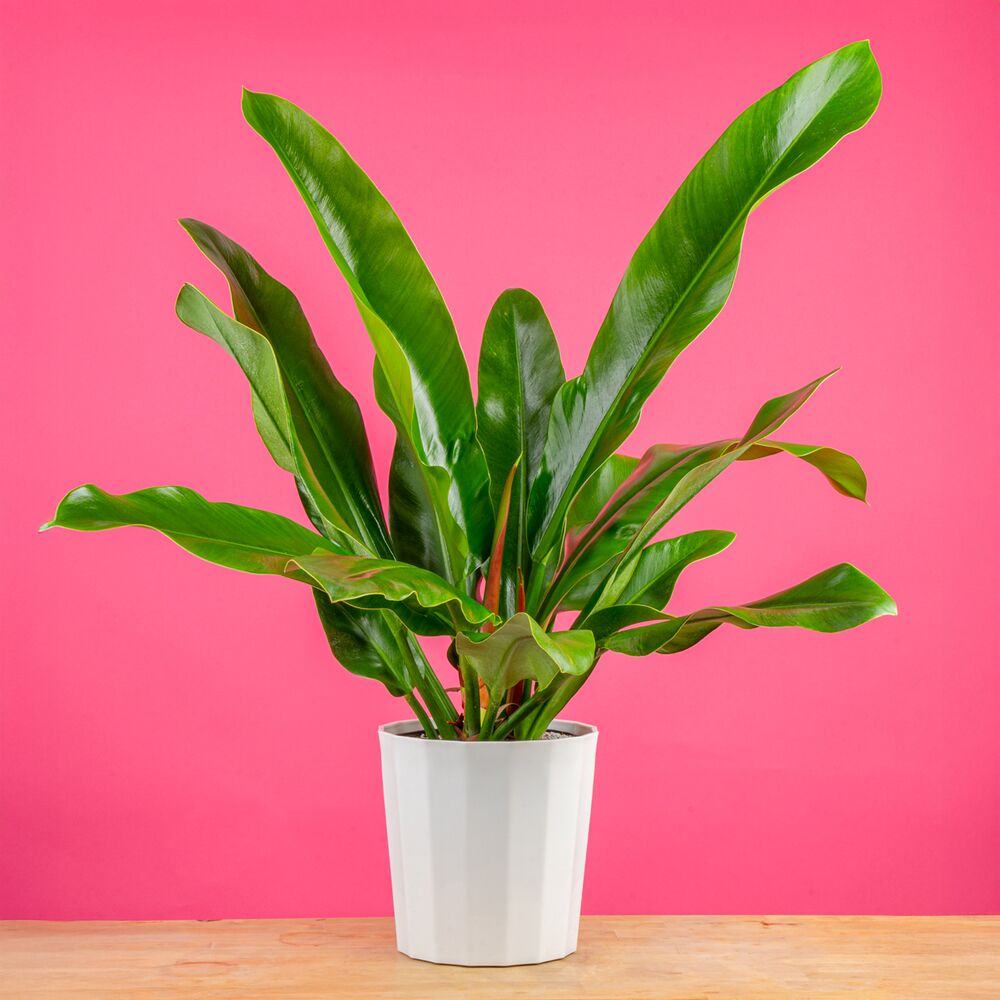
Philodendron ruizii
Philodendrons are popular tropical houseplants known for their heart-shaped or lobed leaves, but some develop deeply cut or finger-like foliage as they mature. Leaf textures vary: many are glossy and smooth, but some, like Philodendron micans, have a soft, velvety surface.
The most well-known variety is Philodendron Selloum, but Costa Farms also offers other varieties like Golden Crocodile, White Knight, Pink Princess, Birkin, Ring of Fire, and Tortum among others.
Watering Your Philodendron
Most Philodendron varieties like their soil to be evenly moist but not soggy. Let the top 50% to 75% of the soil dry out between waterings. Insert a wooden skewer or chopstick halfway into the soil. If it comes out clean and dry, it's time to water. If damp soil clings to it, wait a few days.
Philodendron 'Birkin' in a 6-inch pot
Watering guidelines by pot size:
6-inch pot: About 1 cup of lukewarm water

Philodendron Jungle Boogie in a 10-inch pot
10-inch pot: About 3 cups of lukewarm water
Pour water slowly and evenly over the soil surface so all roots are moistened. Avoid watering directly into the base of the plant or onto the leaves.
Important: Never allow your Philodendron to sit in standing water. If it’s in a decorative outer pot, empty any water from the cachepot or saucer 15–20 minutes after watering.
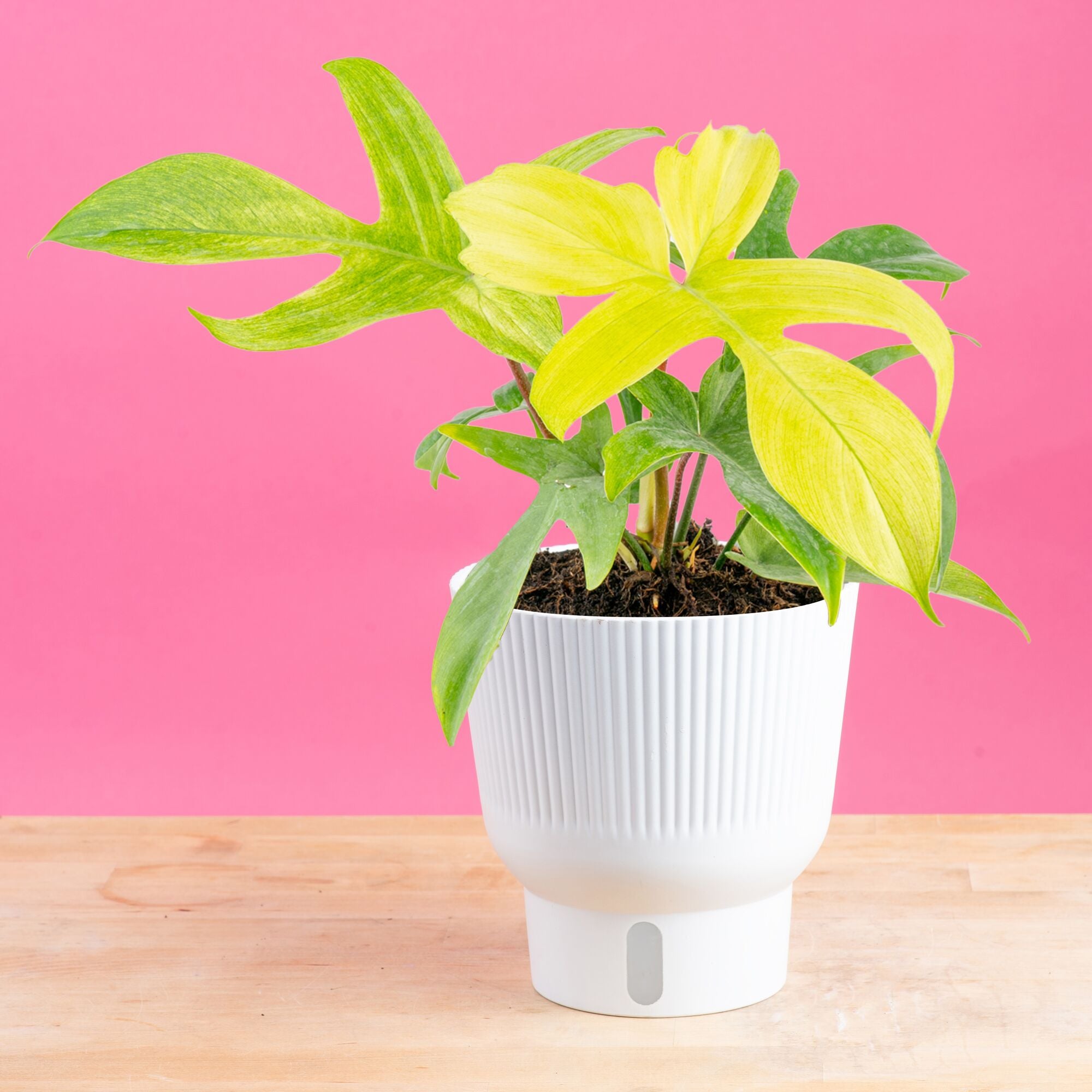
Philodendron Florida Ghost
Light Requirements
Philodendrons thrive in bright, indirect light. A few hours of early morning sun (before 10:30 a.m.) is fine, but they should be protected from strong midday or afternoon sun, which can cause leaf burn.
If your Philodendron isn’t getting enough light, you may notice:
Smaller new leaves.
Long gaps between leaves (leggy growth).
No lobes in mature leaves.
The plant leaning toward the light source.
Rotate your plant every couple of weeks to promote even growth.
Fertilizing
Fertilize during the spring and summer growing season only. Use a balanced houseplant fertilizer (such as 20-20-20) or a time-release formula, applied monthly or according to label instructions.
Avoid fertilizing in fall and winter, when the plant’s growth slows down. Too much fertilizer in the off-season can damage roots or lead to salt buildup in the soil.
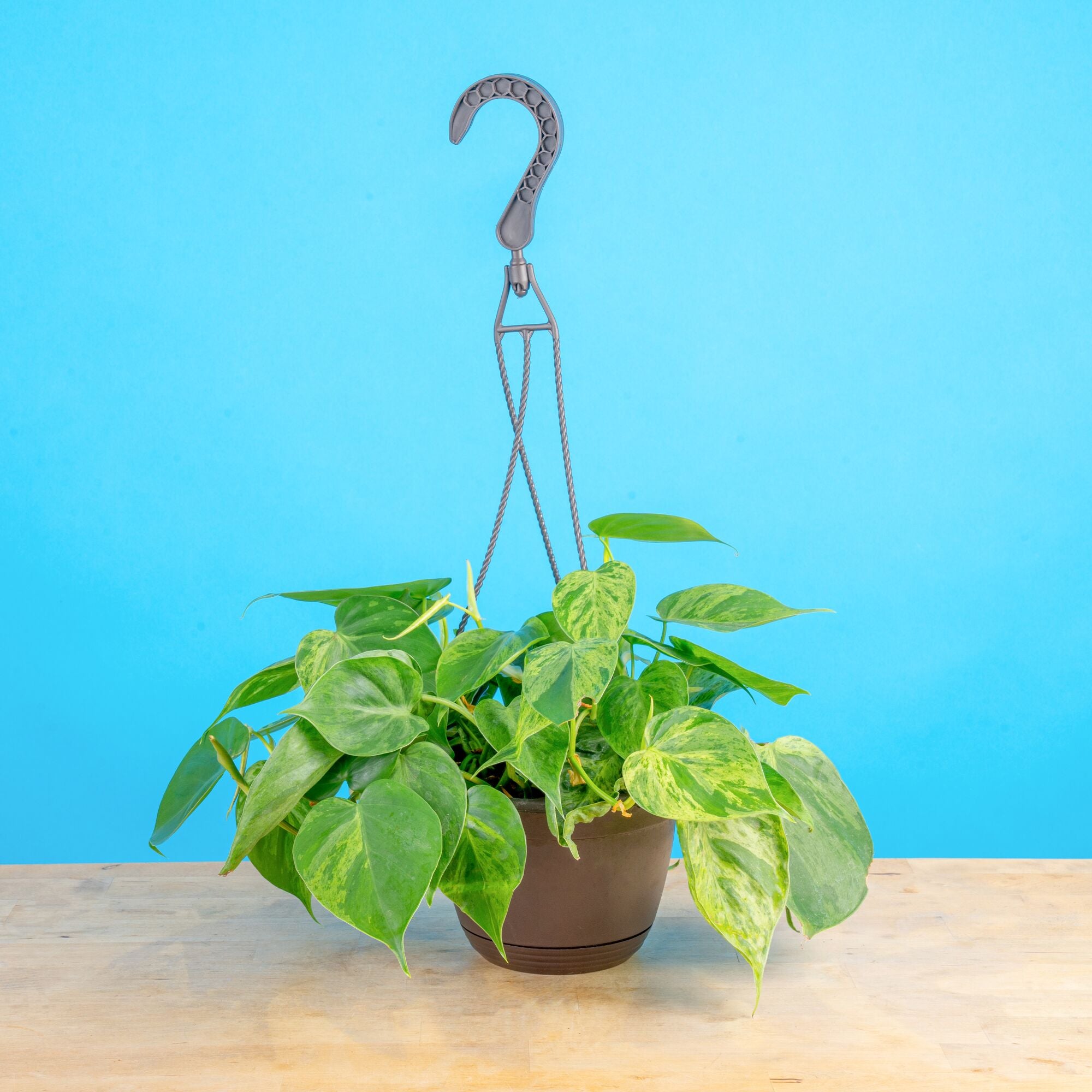
Variegated Heartleaf Philodendron
Temperature and Humidity
Philodendrons prefers warm, slightly humid conditions, similar to its tropical origins.
Ideal conditions:
Temperature: Keep above 60°F (growth slows below 55°F)
Humidity: Prefers 40–60% or higher
If your home is very dry—especially during winter—consider:
Using a humidifier.
Grouping plants together.
Placing the pot on a tray of pebbles with water (keep the pot above the water line).
Avoid placing your plant near cold drafts, AC vents, or heaters as processed air blowing on the plant will strip away moisture from the leaves.
Soil Needs
Use a well-draining potting mix (ideally mixed with perlite or orchid bark).
The goal is moisture retention with airflow around the roots.
General Care Tips
Wipe leaves with a soft, damp cloth to remove dust and help the plant photosynthesize.
Rotate the pot occasionally to keep growth balanced.
Watch for yellowing leaves (a sign of overwatering) or leggy growth (not enough light or not climbing).
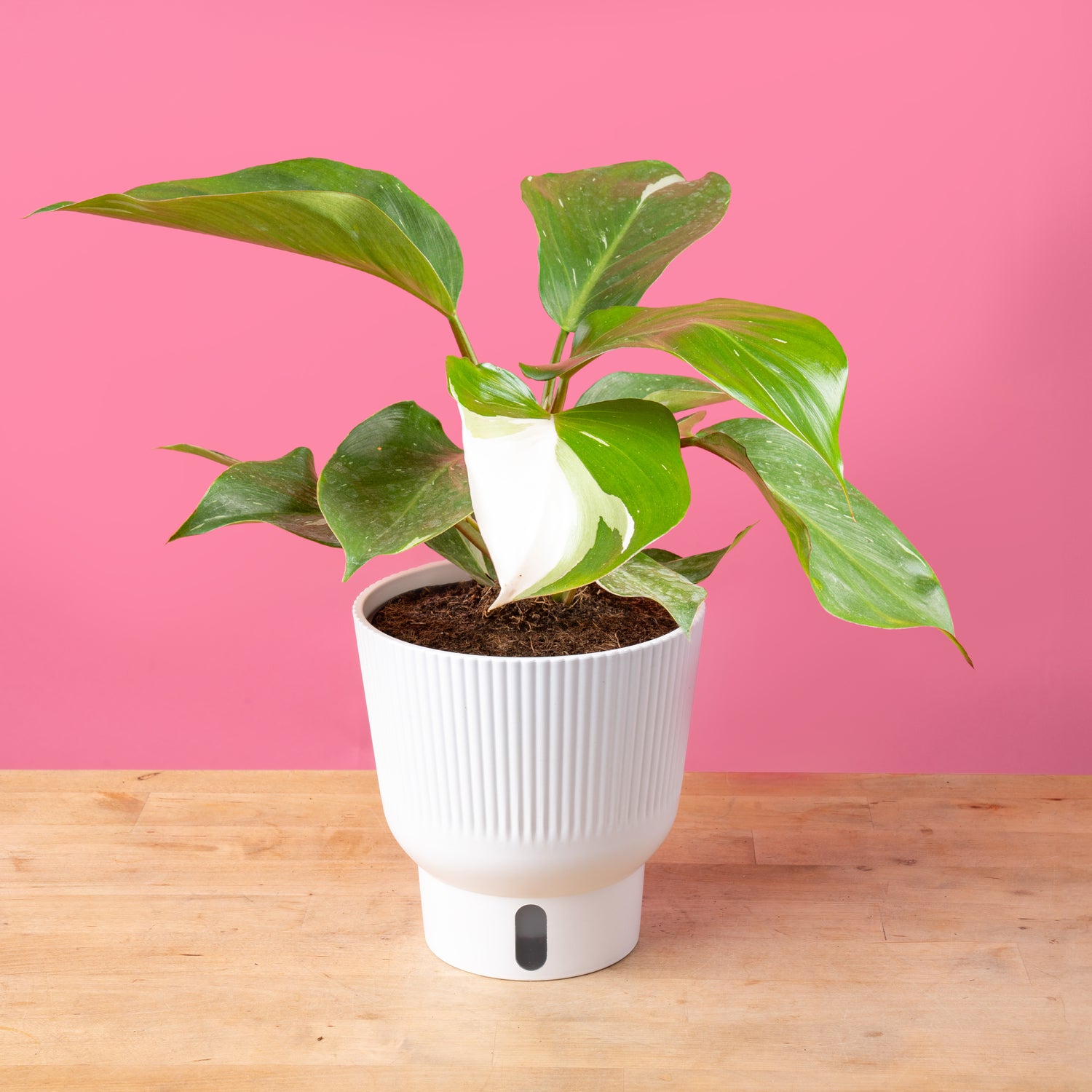
Philodendron 'White Knight'
Growth Habit
Most Philodendron species are natural climbers. In the wild, they use aerial roots to climb trees and other surfaces. Indoors, your Philodendron may benefit from a moss pole, coir pole, or trellis as it matures. This helps support upward growth and encourages larger leaves.
- Vining (climbing or trailing) types, like Philodendron ‘White Knight’, and Brasil.
Vining types often develop aerial roots to cling to supports or surfaces…just like pothos and monstera. These roots absorb moisture and help with climbing. - Self-heading (non-vining) types that grow upright and often unsupported, like Philodendron ‘Lacy Tree’, ‘Ring of Fire’
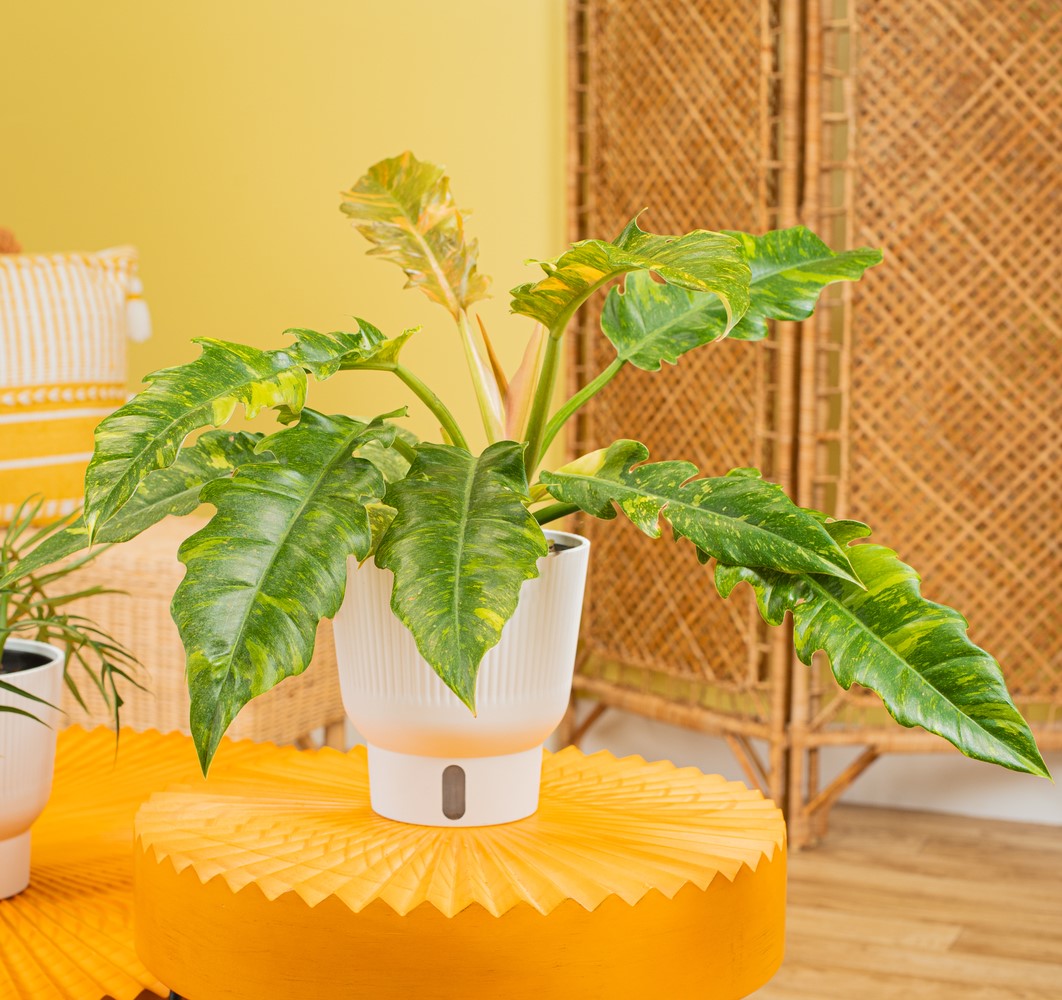
Philodendron 'Ring of Fire'
Like other aroids, philodendrons produce a spathe and spadix flower structure, although indoor plants rarely flower.
Philodendron 'Pink Princess' with spathe and spadix
Propagation
Propagation means creating a new plant from a piece of an existing one — like making a plant “clone.” With philodendrons, most types can be propagated by stem cuttings.
Best Time to Propagate: Spring or early summer — when the plant is actively growing.
How to Take a Cutting
1. Find a Healthy Stem. Look for a stem with at least one node — that’s the bump or joint where a leaf and root can grow.
On vining types (like Philodendron hederaceum or ‘Brasil’), nodes are easy to see where leaves meet the stem.
On upright types (like ‘Birkin’), it may look more like a thickened base between leaves.
A node is essential — no node = no roots!

Cut Below the Node
2. Using clean scissors or pruners, cut just below the node — about 4–6 inches of stem with 1–2 leaves is perfect.
3. Place the cutting in Water or Soil
Option 1: Water
Put the cutting in a jar with clean water, making sure the node is underwater but the leaves stay dry.
Place in bright, indirect light.
Change the water every 5–7 days.
Roots usually appear in 2–4 weeks.
Option 2: Soil
Dip the cut end in rooting hormone or honey (optional).Plant the cutting into a small pot with moist, well-draining potting mix. Keep in a warm, humid spot with bright light. Water lightly and keep the soil barely moist while it roots.
Differences Between Varieties
Vining Philodendrons (Brasil, Micans, etc.)
Easiest to propagate.
Root readily in water or soil
Great for beginners
Self-heading Philodendrons (Birkin, Moonlight, Xanadu, etc.)
Some can be divided carefully at the root
Rare or chunky species (Gloriosum, Melanochrysum, Florida Ghost) usually need stem cuttings with multiple nodes
Root slower and may prefer sphagnum moss or soil over water
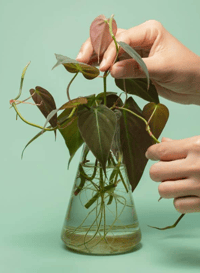
Bonus Tip: Once the cutting has roots 1–2 inches long, you can plant it in soil and treat it like a normal philodendron!
⚠️ Toxicity Note
All Monstera varieties are considered toxic if ingested by pets or people. They contain insoluble calcium oxalates, which can cause irritation or swelling if chewed or eaten. Keep out of reach of cats, dogs, and small children.
If your plant arrived in a Wick and Grow pot here is a quick video showing how to use it: